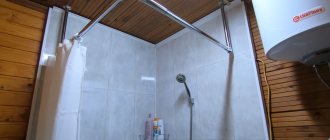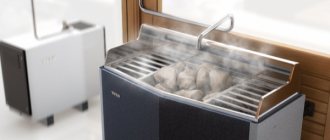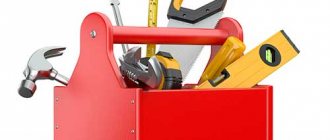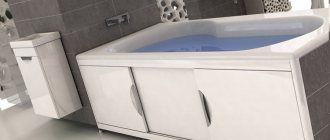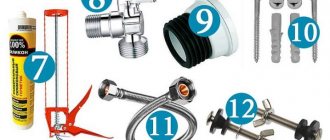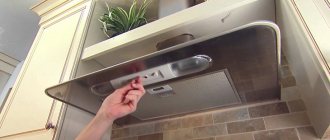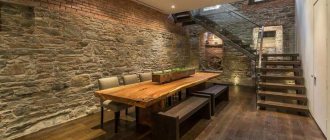Coffee capsule Nescafe Dolce Gusto Chocochino, 3 packs of 16 capsules
1305 ₽ More details
Hot chocolate capsules Nescafe Dolce Gusto Chococino, 8 servings
334 ₽ More details
Chinese lanterns
Many people are interested in growing garden and vegetable crops. And this is understandable: when harvesting a crop that has been cultivated for many months, and seeing the fruits of one’s labor, anyone will experience unprecedented pride. Usually our citizens are engaged in the preparation of canned food and also various pickles, which feed the family during the long winter period. But how to preserve all this wealth until winter?
Previously, ordinary cellars, which were a pit lined with bricks, were used to store provisions. Now there is a more modernized solution - a caisson for the cellar. The option is much more convenient and profitable. In our article we will tell you more about this innovation and what types of caissons exist.
Caisson for a cellar - what is it and what is it for?
A caisson is a sealed capsule that has the ability to store the required temperature and humidity inside itself for a long period, staying in any place. This device is used to preserve vegetables, fruits and canned food in all conditions. Installing a caisson almost always requires the use of special equipment. The production of capsules is very popular: manufacturers understand that the manufacture and production of such products are in demand.
The caisson is a practical element of the cellar
The use of a capsule will save the harvest, food stored in it and preservation from moisture and rodents. The surface of the material used in its manufacture is durable and can withstand not only soil pressure, but also interaction with the waters in it.
This is interesting: what you need to know about the lateral soil pressure on the basement walls.
Often the caisson for the cellar is immersed directly into these waters, since sometimes they lie quite close to the surface. In such situations, a special installation technology is used, which involves subsequent sealing of its shell. The device can be installed in a cellar, garage, well next to the cellar, and in any other premises.
After collection, the caisson looks like a container that was placed deep into the ground to a depth of about 2 meters, with a single entrance hole at the top.
In this video you will learn more about the caisson:
Arrangement of the cellar
Most models of plastic cellars are immediately equipped with everything necessary for storing vegetables and preparations (Figure 5). But there are also cheap models that consist only of the tank itself with a ladder, a hatch and a ventilation system. You will have to arrange them yourself.
Picture 5. Interior design options
To do this, you can install special racks made by yourself against one of the walls. They will be used to store blanks in jars. It is also necessary to provide drawers and flooring for storing fresh vegetables, as well as provide electricity to the basement.
You can get acquainted with the installation process in more detail in the video.
What are the advantages and disadvantages of a caisson
Among the advantages of the caisson are:
- High level of protection compared to a conventional cellar. The caisson is completely sealed, you can even place it in water and not worry about the products stored inside.
- It is not susceptible to mold, which almost always forms in cellars. An environment is created inside the capsule that promotes long-term preservation of products.
- The versatility of the device. Metal caissons can be installed in absolutely any place: under a house, garage or shed, or even in an open place.
- When the caisson is installed correctly and sealed, it protects the reserves not only from atmospheric precipitation, sewage or groundwater, but also from insects, rodents and other pests.
- The range of materials from which a capsule can be made is amazingly diverse.
Among the disadvantages are the following factors:
- additional costs for insulating and ventilating the device;
- when the house has already been built, the caisson can only be installed in another place, which is not always convenient.
Construction of houses
0 votes
+
Vote for!
—
Vote against!
Almost every owner is concerned about the issue of preserving their harvest, which is usually sent to the cellar after harvest. Previously, ordinary pits lined with brick were used for this. But today there is another solution that is more convenient and profitable. This is a caisson cellar, in which the optimum temperature is always maintained, suitable for both fresh food and preservation, and there are no prerequisites for flooding with water. Today we’ll talk about how to make a caisson for a cellar.
Characteristics and advantages of the caisson
It is customary to store fruits, vegetables and root vegetables, bottles of wine, as well as various pickles and canned food supplies prepared for the winter in a warm barn or a separate storage unit, cellar or basement under the house. The most convenient and accessible place for these purposes is considered to be the basement under the house.
Previously, supplies were stored in a pit made of concrete, brick or wood. But the fragility and leakiness of these materials speak against them. Brickwork and concrete deteriorate over time, and wood is exposed to fungus, mold and rodents. In addition, in our climate zone it is not easy to find a place with a low groundwater level, so the cellar can be flooded with water at any time, and the provisions will not be damaged.
However, now a worthy alternative has been found for such buildings, which allows one to abandon the outdated solution - the caisson for the cellar. A caisson is a kind of dry chamber that can form an air pocket in water-saturated soil or under water. Initially, this type of cellar was used only under water, but soon the scope of its application expanded significantly.
Today, the caisson cellar looks like a circle or parallelepiped, which has a hatch and a neck. The thickness of the ceiling and walls can reach 16 millimeters, because they need to withstand pressure from the soil and groundwater. To prevent the formation of dampness and excess moisture inside such structures, supply and exhaust ventilation is provided. To prevent the caisson from floating up under the pressure of groundwater, there is a special anchorage.
Let's look at the advantages of a caisson for a cellar. Caissons for cellars have proven themselves to be excellent in any conditions, even in lowlands and in areas characterized by high groundwater, as they are completely sealed buildings. As you know, most cellars suffer from fungus, but this does not threaten the caisson. Also, you should not be afraid that the vegetables and products that you store in the caisson will acquire a specific smell.
A caisson cellar can be installed in any desired location, for example, in a house, garage, under a kitchen or barn, and sometimes even in an open area. If you carry out all the necessary procedures for waterproofing the structure, you will be able to protect the cellar from heavy rains, water supply accidents or large amounts of groundwater. Also, the caisson is much more protected from the penetration of thieves, in comparison with classic cellars.
Classification of caissons
At the moment, there are several types of caissons for cellars. Let's look at this in more detail:
- Reinforced concrete structures. Reinforced concrete caissons are made of concrete rings. It is worth mentioning that before installing a caisson for a cellar made of concrete rings, it is necessary to prepare a good foundation. Once all the rings have been placed, a sturdy lid is placed on top. If you plan to make a cellar from reinforced concrete, it is necessary to carry out high-quality waterproofing, which is carried out on the water pressure side. The disadvantages of this option include the too heavy weight, which will significantly complicate the installation and implementation of waterproofing. In addition, reinforced concrete caissons are quite expensive. Therefore, from a financial point of view, it is better to choose another type. Owners of reinforced concrete caissons recommend choosing metal or plastic structures.
- Metal structures. Such cellars can be called the most popular. They are made from steel sheets approximately 20 millimeters thick; subsequently, they are welded into a sealed cube with an internal staircase and a built-in hatch, which must be treated with a special anti-corrosion coating. This design helps maintain the optimal temperature inside the cellar for storing and preserving vegetables. It is possible that groundwater will flow into the pit, so it is necessary to make a special bypass valve.
- Plastic structures. The plastic caisson cellar does not require anti-corrosion treatment. In addition, it is lightweight, so when installing such a caisson you will not need additional equipment. You should also know that the plastic model is highly airtight, so there is also no need for waterproofing protection. A plastic caisson can operate trouble-free for fifty years or more.
DIY caisson cellar
Recently, the caisson has become widely used among summer residents and gardeners. Many home owners know that groundwater levels can often rise and spoil their fruit and vegetable supplies. A caisson cellar can provide provisions with reliable protection from water. If stored properly, vegetables and root vegetables will remain fresh all fall, spring and winter, and home-canned vegetables will last for many years.
Manufacturing of metal caisson
When choosing a place for a caisson, remember that it is recommended to build a cellar in the middle of the underground space so that its walls can be constantly blown with fresh air. Most often, the cellar is located in the kitchen underground. In this case, it is better to make the entrance through the floor of the room, having previously provided a passage with steps. The hatch should be well closed with a lid that should be placed flush with the floor. It is advisable to make the lid from the same boards as the floor.
The caisson must be installed before the construction of the main room. Carefully inspect the surface on which you plan to install the caisson. If your site is located in a high and dry place, there should be no problems. But if the soil is swampy, you will have to work hard. Experts recommend choosing a welded metal caisson, as it is highly reliable. But you may prefer a plastic model.
You can purchase a ready-made structure in special stores or order a cellar according to your own standards. But if you have certain skills and have the appropriate equipment, then you can try to make a caisson for the cellar with your own hands. The shape of the cellar can be round, square, hexagonal, elliptical, rectangular.
Remember that the seams of the caisson must be well welded outside and inside so that water cannot penetrate inside. If you do not weld the seams well, corrosion damage will occur very quickly and you will have to make expensive repairs. The floor and walls of the caisson must be made of metal, but the upper part can be made of wood or concrete.
Arrangement of the pit and drainage basin
After this, you need to calculate the size of the future pit and mark the territory. To install a metal caisson, you need to dig a hole with a depth of at least 2.5 meters. The pit should be marked in such a way that there is a distance of half a meter between its walls and the walls of the caisson.
This gap must be made around the entire perimeter. At the same time, try to preserve the turf so that the walls of the pit do not crumble. When digging a pit for a caisson with your own hands, problems may arise with water that has accumulated in the upper layer of peat. The peat is supported by clay, which prevents water from going down. So when you remove the top layer and see the clay, there may be water there.
To cope with this problem, you should dig a hole in the center of the pit, approximately the depth of a spade bayonet. It should look like a water collector. When you have dug a pit of the required depth, fill the bottom with sand to create a cushion ten centimeters thick. For reliability, you can coat the walls and bottom of the caisson with tar.
Waterproofing a caisson cellar
Before installing a metal caisson, its walls must be treated with a special anti-corrosion coating. You can also apply painted waterproofing. To do this, you should buy a special composition. You can also cook bitumen mastic yourself in a boiler. Bitumen should be loaded into the boiler to about a third of its volume, put on fire and wait until all the moisture has disappeared. This will happen when the mass stops foaming.
After this, you need to pour the molten bitumen in a thin stream into an open container with gasoline and mix the resulting composition. To prime the external walls of a metal caisson cellar, take bitumen and gasoline in a ratio of 1:3, for the first coat of paint - 1:1, and for subsequent layers - 3:1. The coating with this composition should be continuous and reinforced in sharp places.
Caisson thermal insulation device
It’s great that water does not penetrate into the cellar, but on the other hand, the temperature in the caisson is very high. For this reason, water will drain from the metal walls, and food will quickly rot. To overcome this problem, good thermal insulation should be installed. Try to properly insulate the bottom of the cellar and its walls.
It is advisable to install the caisson on a clay insulating layer 200-250 millimeters thick. It is better to insulate the outer sides of the cellar with thick, thick clay of the same thickness. For greater reliability, it is recommended to plaster the internal walls of the cellar and the floor using cement mortar with a layer of 20 millimeters.
To do this, you need to stretch a steel mesh with cells no larger than 30x30 onto a steel wire frame that is 6 millimeters thick, tie the wire to the frame and plaster the walls. After this, you should make a concrete composition and lay it on the floor in a layer of 35 millimeters. Once you have leveled and smoothed it, the plaster should dry thoroughly. The internal walls of a metal caisson for a cellar can be insulated with blankets or glass fabric with filling. Glass wool should be placed between the fabric sheets.
Installation of a caisson in a pit
After this, you can lower the caisson into the pit. First, logs should be lowered vertically on both sides. These will serve as guides and stops, allowing you to position the caisson exactly in the center. The caisson can be lowered using a winch, which is secured to the abandoned stump. It is necessary for one person to constantly loosen the cable, and others to guide the frame with the help of wags and keep it from swinging.
At this stage, certain difficulties may also arise when the caisson plays the role of a “floating ship”. If water constantly flows into the dug hole, the caisson will float. For this reason, it is necessary to install a water seal. To do this, fill the distance between the walls of the cellar and the pit with clay. Each layer must be compacted. It is better to install a water seal below the freezing depth, to a depth of about one and a half meters.
No matter how well the water seal is made, it cannot provide a complete guarantee against water entering the bottom of the cellar. Therefore, the danger of ascent remains. To eliminate this, when constructing a caisson for the cellar, you should be guided by the principle of a submarine: for this, water is drawn into the ballast tanks, air is displaced and the boat receives negative buoyancy. At the bottom of the caisson you need to make a hole with a welded pipe.
At first, you don’t have to turn it off, but leave it open. When the first rain passes, there will be about half a meter of water in the cellar that needs to be bailed out. After repeated rains, very little water will be collected, and soon the cellar will not absorb it. The water supply itself will fill all the cracks with watery clay, firmly establish the cellar and isolate it from itself. After this, the pipe can be plugged, but in the first year of using the caisson, you don’t have to do this.
Arrangement of a caisson cellar
After installing the caisson with your own hands, you need to equip it. There is a huge selection of boxes and shelves on the market for storing food that can be installed around the perimeter of the caisson. Along one wall you can make special fences with walls and a floor for storing root vegetables, for example, potatoes, beets, carrots, etc. The width of the fence should be one meter.
You can also install special racks made of boards with several tiers along the other wall, the distance between which should be approximately 0.4 meters. Racks must be supported by wooden racks, which are made from bars. On such racks it is convenient to store cabbage and other vegetables, as well as various pickles, juices, compotes and preserves.
Building a caisson cellar with your own hands is not only about installing shelves and drawers, it is also about constructing ventilation, supplying electricity and, of course, attaching a ladder. Remember that the metal caisson must have pipes for ventilation, otherwise there will be dampness there. You can install a wind-catching vent pipe. This should be enough to ventilate a small room. You can also put some absorbent materials that will absorb moisture.
So that you can go down to the cellar without problems, you need to install a comfortable inclined staircase, at least half a meter wide, which is made of wood or metal corners. The ladder should be well secured at both ends so that it does not move or wobble. It is advisable to secure the steps using nails with a wide head or metal washers.
You can also make it so that you can get directly into the cellar from the house itself. To do this, cut a hole in the floor - a hole measuring 0.7 by 0.7 meters. Subsequently, you need to install a shield made of boards on this hole. The approach to the hatch that covers the caisson must be visible and safe. It is worth placing a fabric mat on the manhole cover, which should fit tightly into the frame or box of the manhole. The thickness of the mat must be at least 50 millimeters.
You can light your cellar with an electric or kerosene lamp, lantern or candles. At the same time, remember about fire safety and that it is advisable not to leave kerosene in the caisson, since the food may become saturated with its smell. After filling the cellar with products, the top of the caisson is covered with heat-insulating material: peat, sawdust, moss, slag or expanded clay. The first three backfills, due to their flammability, should be covered on top with a layer of earth, sand, slag or expanded clay.
Thus, after arranging a caisson cellar with your own hands, try to keep your cellar clean and ventilate it from time to time. There must be a sufficient amount of oxygen and a minimum of toxic gases inside. In summer it is recommended to dry the caisson. If you find cracks, you need to coat them with clay and cover them with lime plaster mixed with sand, level the coating, smooth it with a plaster spatula and dry well. During this procedure, try not to wash the floor in the caisson - just wipe it with a damp cloth. And be careful that the vegetables in your cellar do not start to rot!
Types and sizes
Based on the materials used for the manufacture of caissons, the following types of capsules can be distinguished:
- metal;
- plastic;
- reinforced concrete;
- brick.
This type of caisson cellar is extremely resistant to corrosion (in particular, steel and aluminum). In this case, the wall thickness must be made at least 3 mm; this is the most suitable parameter.
The metal caisson must be treated on the outside with an anti-corrosion agent. The inside of the container is primed. This will extend the service life by more than a dozen years.
Among the disadvantages of a metal device:
- high level of heat conduction: the wall thickness of 3 millimeters is difficult to retain heat;
- A caisson of this type requires mandatory insulation.
The caisson can be made from various materials.
A structure made of reinforced concrete material can consist of reinforced concrete rings and a cover, or a solid structure is created, which is completely filled with concrete, installing the formwork in advance. This type is the most expensive in terms of costs. In addition, concrete is hygroscopic, which requires waterproofing work inside and outside.
Another drawback is poor thermal insulation, therefore, at very low temperatures, the reserves placed in it can freeze. We can also highlight such disadvantages as a complicated installation process and a short period of use. Brick cameras have similar qualities.
Plastic caissons for cellars are made from high-strength polymers. The walls of such a capsule are approximately 20 mm thick. These capsules have a very long life, are impervious to moisture and are not subject to corrosion. This device is especially relevant for areas where groundwater lies very close to the surface.
Plastic cameras have a lot of advantages:
- The period of use is more than 45 years.
- Resistant to corrosion and chemicals.
- The connections in the capsule are made using specialized cuffs, this ensures an absolute tightness of the structure.
- Highly durable and equipped with stiffening ribs, the polymer contains special chemical components.
- The temperature in the capsule is maintained above zero.
- The low weight of the structure does not require the use of special equipment during installation.
Among the disadvantages is a significant risk of deformation when exposed to the weight of the soil or under the pressure of groundwater. In addition, due to the excessively low weight, the capsule may rise to the surface.
Read more: advantages and disadvantages of a plastic cellar.
Price of a plastic cellar (caisson) from the manufacturer, indicating the model
The capacity of the plastic caisson varies depending on the model. The volume of the caisson is measured in liters.
Here are the common models of plastic caissons:
- Tortila model with lid: Price = RUB 145,600. Volume = 7000 liters. Weight = 300 kg.
- Model Kellari 2: Price = 159,900 rub. Volume = 2000 liters. Weight = 200 kg.
- Model Kellari 5: Price = 229,900 rub. Volume = 5000 liters. Weight = 350 kg.
- Model Kellari 7: Price = 285,900 rub. Volume = 7000 liters. Weight = 435 kg.
- Model TINGARD 1500: Price = 111,000 rub. Volume = 5400 liters. Weight = 480 kg.
- Model TINGARD 1900: Price = 176,000 rub. Volume = 9400 liters. Weight = 570 kg.
- Model TINGARD 2500: Price = 209,000 rub. Volume = 12350 liters. Weight = 790 kg.
- Model Alta 20: Price = 229,000 rub. Volume = 8 m3. Weight = 500 kg.
- Model Alta 25: Price = 272,000 rub. Volume = 10 m3. Weight = 570 kg.
- Model Alta 30: Price = 305,000 rub. Volume = 12 m3. Weight = 640 kg.
- Model Alta 35: Price = 339,000 rub. Volume = 14 m3. Weight = 710 kg.
- Model Alta 40: Price = 378,000 rub. Volume = 16 m3. Weight = 780 kg.
I would also like to say about the plastic caissons of the Bars model. There are 16 models available with different sizes and prices. You can order custom sizes.
Look how comfortable it is in the caisson of the Bars model.
And how convenient it is in the Kelleri caisson.
And how constructive the TINGARD caisson is in its perfection.
Which caisson to choose and where to place it
The caisson cellar is increasingly being placed on the territory of summer cottages. They are used against the systematic rise of groundwater in order to protect your crops for as long as possible. In this case, it is possible to either purchase a ready-made capsule with an installation, or install it yourself.
Many experts advocate metal caissons for the cellar, citing the fact that they are very reliable.
Before making a caisson for the cellar, you should carefully select the location for installation. When choosing a place to install the caisson, you need to understand that constant ventilation of the capsule walls is required. The most convenient option is an underground floor under the kitchen with an entrance hatch built into the floor. It is important to consider that the hatch cover must be as tight as possible and should be located at floor level.
Careful inspection of the installation site is required. When it is located at a certain height and is not excessively wet, it will be very comfortable and suitable. But if the area is swampy, then some effort will be required for installation.
Don't forget to check the location for the caisson
Features of installing a coffered cellar
Before installing the caisson, it is necessary to arrange the well or basement. The algorithm for installing a coffered cellar on the territory looks like this:
- Preparing the pit. First of all, a pit is needed in the desired location. To do this, 200-230 mm of the top surface of the soil is removed. The dimensions of the pit should be planned in such a way that each side is 500 mm larger than the dimensions of the capsule. The depth of the pit should be such that after the caisson is immersed there, its top is below the freezing level of the soil in the installation region.
- Then you should prepare a sand cushion. To do this, the bottom of the pit is moistened with water and compacted. After which a cushion of a mixture of sand and gravel is poured. It should be evenly distributed over the entire surface, the thickness of the embankment should be approximately 200 mm. If moisture appears on the surface at the time of manipulation, then several layers of a mixture of straw and clay should be placed under the sand cushion.
- Installation of the base. To prevent the capsule from distorting or moving sideways into the base of the device, it will be necessary to concrete the concrete base slab for the cellar. In this case, it acts as a balancing element.
It is possible to prepare the slab on site. For this purpose, formwork of 150-200 mm is mounted on the sand cushion. Reinforcement is laid on top, and the whole thing is filled with concrete. The drying time of the structure is 28 days, but you can work with it in 1-2 weeks.
Installation in a pit
When the pit preparation is completed, the caisson body should be installed:
- Working with a crane. To lower the device into the pit, it is advisable to use a special crane, front-end loader or bucket excavator. When it is not possible to use equipment, you can arrange the installation yourself.
- Manual installation. Necessary for installing the capsule correctly, in the center of the pit. Logs are placed along the walls of the pit, a pair on each side. The caisson is placed on the edge of the pit and strong ropes are attached to the loops. A couple of people stand at the edges of the pit and lower the capsule down. Two more people synchronously release the ropes.
- Anchor fastening. The caisson is attached to the base slab in order to avoid being pushed to the surface. For these purposes, standard mounting loops or expanding anchor bolts with an eye are used. The securing devices are placed symmetrically on both sides of the capsule.
Waterproofing of external walls
A metal cellar should be protected from moisture. Before waterproofing the caisson cellar, its metal surface should be prepared. The seams are cleaned, all parts that protrude on the surface are smoothed, since such parts can damage the insulating layers.
Waterproofing work is carried out using several methods:
- Painting technique for waterproofing. First of all, you need to cook mastic from bitumen or bitumen mixture in the boiler. To do this, fill the boiler one third with bitumen and cook it until the foam disappears. When everything is well cooked, the resulting mixture is applied in several layers. Special attention must be paid to the seams.
- Pasting method. It is performed with sheets of roofing felt on bitumen mastic. The bitumen is heated to improve adhesion. The sheets should be overlapped for greater tightness.
- Using asphalt. This is one of the most difficult methods. The gap between the caisson and the brick is filled with heated asphalt mastic.
What is the design
Caissons are essentially sealed tanks of a round or rectangular shape. They are placed above wells and protect them from contamination and freezing. The main purpose of the structure is to arrange a working chamber in the ground for the installation of water-lifting devices.
Purpose of products
The original purpose of the design.
Even earlier, caissons were waterproof containers used for underwater operations. Now they are used much more widely .
Such products are used as enclosing structures in the steel industry, aircraft and shipbuilding, general construction and the construction of water intake systems.
Note! It is difficult to find a site with low groundwater levels or a dry climate. Based on this, the cellar can be flooded at any time and all the preparations will be lost. Therefore, caissons are an excellent solution for arranging storage for your food supplies. These dry chambers form air pockets in moisture-saturated soils or under water.
- The caisson and cellar rolled into one can have the shape of a parallelepiped, polygon, ellipse or circle. The structure must be equipped with a neck and hatch.
- The walls of the basement structure can have a thickness of up to 16/20 mm, because they need to counteract the pressure of groundwater and soil.
- To prevent excess moisture inside such a cellar, it must be equipped with a supply and exhaust ventilation system.
- To prevent the tank from floating under the influence of groundwater, it must be secured with anchors.
- A caisson for a basement will be the optimal solution, due to its tightness, for any structure of the site. Even if it is located in a lowland and has a high groundwater level.
- Often, basements, due to excess humidity, are infected with mold and mildew. Caissons are spared from this. There is also no need to be afraid that your supplies stored in such a structure will develop an unpleasant odor.
- You can install the caisson with your own hands in any convenient place - in a residential building, garage, barn, or even in an open area.
Advantages of choice
Insulation of a buried caisson
Thermal insulation is produced to protect the cellar from elevated temperatures and from the release of condensation on the surface. Both the walls and the bottom of the capsule need to be protected. The most optimal way would be to lay out clay 20 cm thick on the outer and inner surfaces.
Don't forget to insulate the caisson
For greater reliability, the walls and floors will need to be covered with cement 2 cm thick. For better adhesion, a wire frame is first made, and then a mesh is attached to it. Only then the plaster is applied. The floor is filled with cement to a depth of 4 cm. The insulation can be supplemented with glass wool or ordinary blankets.
Thus, to select a caisson, you only need to carefully analyze the installation location of the capsule and weigh the pros and cons. Metal caissons for cellars are durable, but require additional work to protect them from moisture. Installing round capsules is a rather difficult procedure, and installing a plastic caisson is much simpler than those made from other materials. A basement with an installed caisson will save and preserve crops and supplies if it is chosen and installed correctly.
Determine what dimensions of the caisson will be required - standard 2000*2000*2000 mm or others, then you can determine how many thousand rubles a caisson of dimensions 2000*2000 will cost. Afterwards you will need to calculate the funds that will be required for the finished structure. Do not forget that you will need a ladder and various paint and varnish materials.
